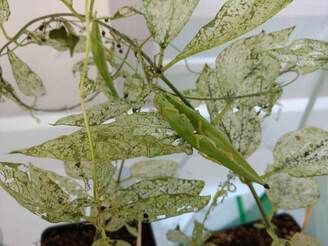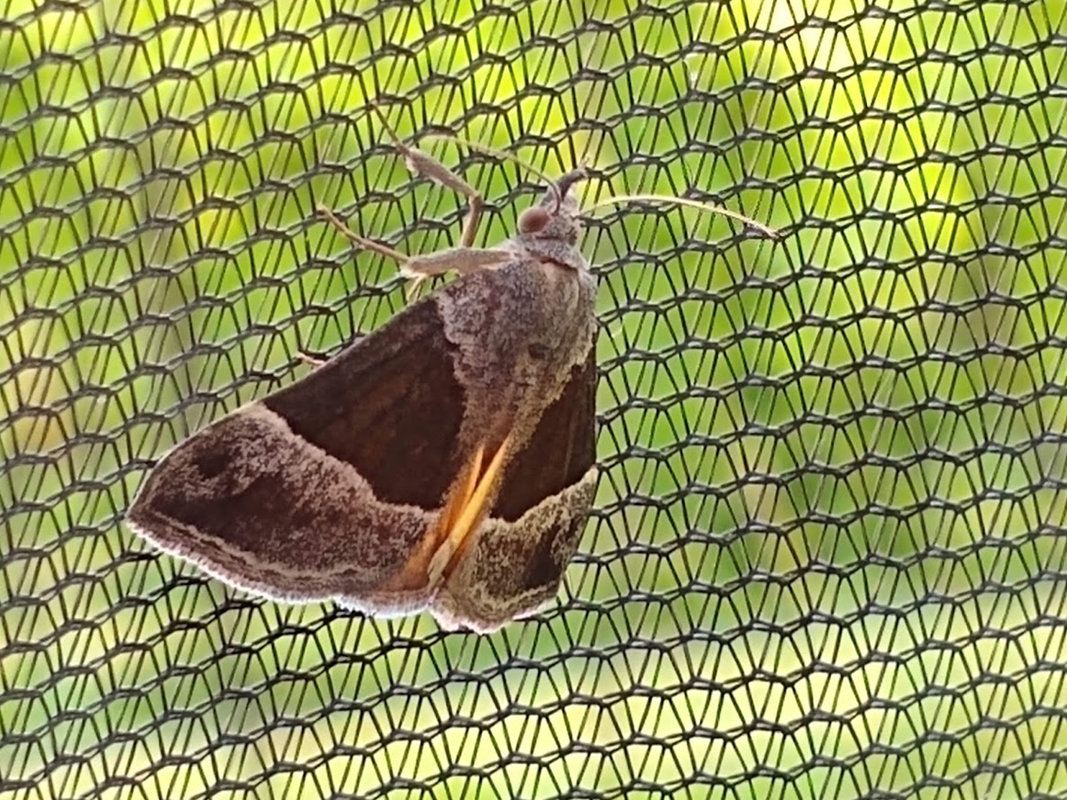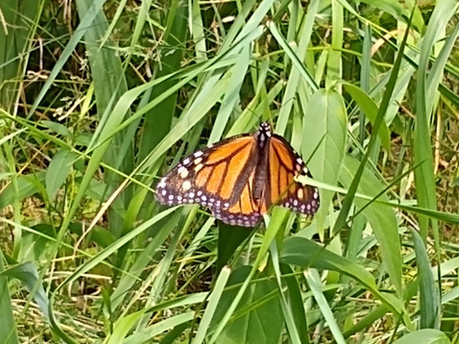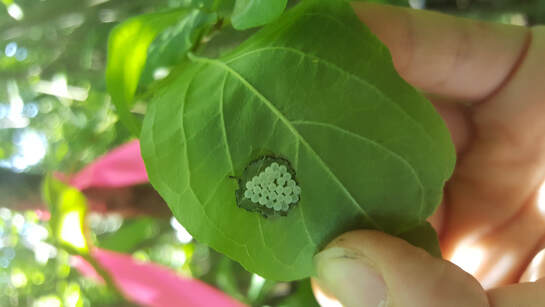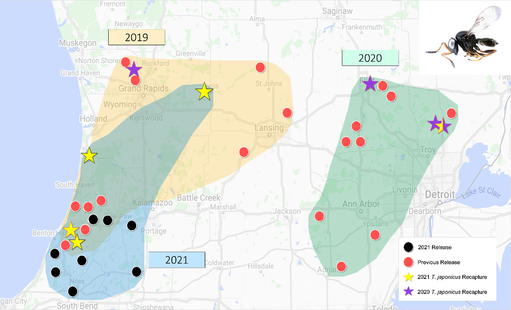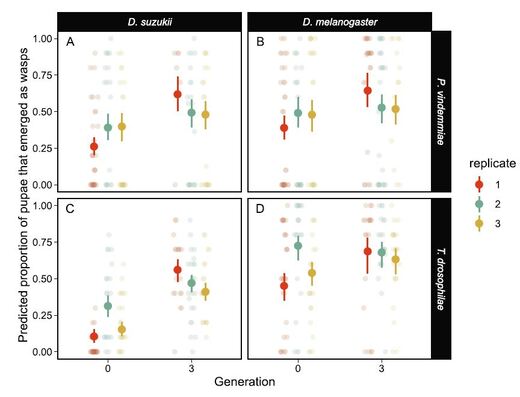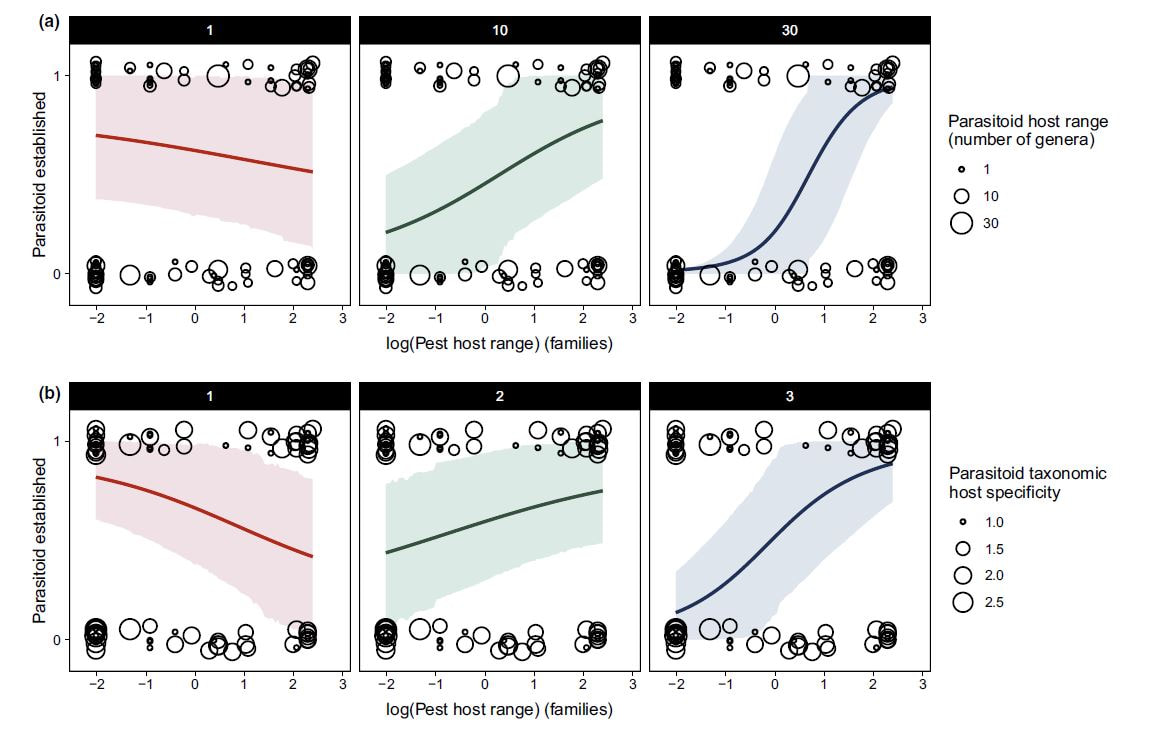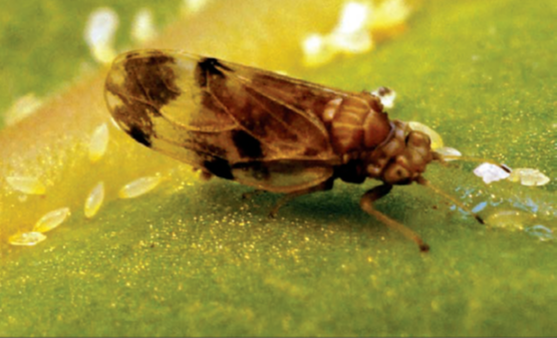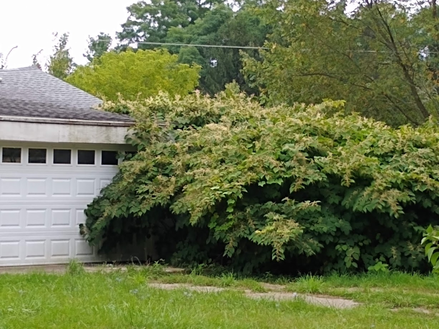Biological control of lily leaf beetles
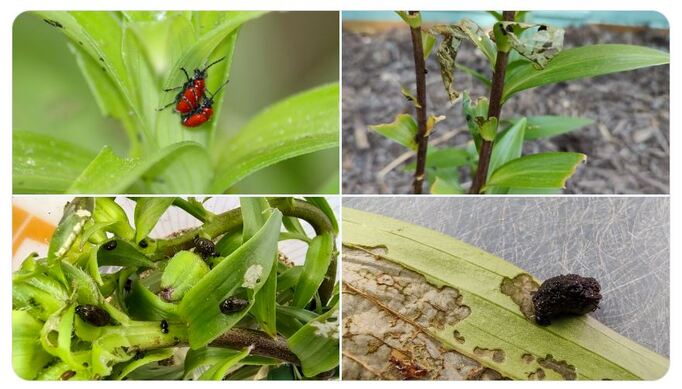 Lily leaf beetle adults (top left, photo: A. Yoshimoto). Damage caused by lily leaf beetle feeding (top right) and larvae that is covered in frass (bottom pictures). Photos: M. Szucs.
Lily leaf beetle adults (top left, photo: A. Yoshimoto). Damage caused by lily leaf beetle feeding (top right) and larvae that is covered in frass (bottom pictures). Photos: M. Szucs.
Lily leaf beetles (Lilioceris lilii) are recent invaders to Michigan. Both the adults and larval stages feed on cultivated Asiatic and Oriental lilies, Turk's cap lilies, tiger lilies, Easter lilies, Fritillaria species, and several native Lilium species, including the Michigan lily (Lilium michiganense). The larvae look like bird droppings as they cover themselves in their frass (insect poop) for protection by predators. They were first found in the USA in 1992 in Massachusetts and have spread across the northern USA and southern Canada. Three larval parasitoids were introduced from the native range of the beetles from Europe to New England starting in 1999 that significantly reduced damage to lilies by lily leaf beetles. In 2023, we are initiating a similar biocontrol program in Michigan by collecting lily leaf beetle larvae across New England that are likely parasitized by the biocontrol agents. Field releases of the biocontrol agents will start in 2024.
Lily leaf beetles (Lilioceris lilii) are recent invaders to Michigan. Both the adults and larval stages feed on cultivated Asiatic and Oriental lilies, Turk's cap lilies, tiger lilies, Easter lilies, Fritillaria species, and several native Lilium species, including the Michigan lily (Lilium michiganense). The larvae look like bird droppings as they cover themselves in their frass (insect poop) for protection by predators. They were first found in the USA in 1992 in Massachusetts and have spread across the northern USA and southern Canada. Three larval parasitoids were introduced from the native range of the beetles from Europe to New England starting in 1999 that significantly reduced damage to lilies by lily leaf beetles. In 2023, we are initiating a similar biocontrol program in Michigan by collecting lily leaf beetle larvae across New England that are likely parasitized by the biocontrol agents. Field releases of the biocontrol agents will start in 2024.
Biological control of invasive black and pale swallow-worts
Swallow-worts (Vincetoxicum spp.) are invasive vines that form dense monocultures replacing native vegetation, disrupting ecosystem processes and lowering land value. Despite intensive herbicide treatments they continue to spread across Michigan. In 2017 the first biological control agent was approved for field release in the USA, a moth that originates from the native range of swallow-worts. We have started working with this moth, Hypena opulenta (Lepidoptera: Erebriade) in 2018. We study how well the phenology of H. opulenta matches the climate in Michigan, the population densities needed for measurable impact on swallow-wort infestations and how genetic background may impact establishment and control.
Swallow-worts and monarch butterfliesSwallow-wort vines are related to milkweeds, the host of monarch butterflies. As a result, monarchs sometimes lay eggs on swallow-wort, however, all their larvae die since they are not adapted to feed on swallow-worts. We found that in Michigan monarchs can lay up to 25% of their eggs on swallow-worts, which will then fail to develop . Thus, swallow-worts act as an ecological trap for monarchs (Alred et al. 2022).
|
|
|
Biological control of brown marmorated stink bug
Brown marmorated stink bug (BMSB) (Halyomorpha halys) is an invasive pest introduced from eastern Asia that has spread across most of the USA, including Michigan where it is now found in all but four counties. It is extremely polyphagous, being able to feed on hundreds of different plant species including tree fruits, vegetables, field crops, ornamentals and native vegetation. Given the vast host range of BMSB despite chemical control in cropping areas large populations can persist in natural areas from where they can recolonize crops. Biological control has the potential to suppress BMSB numbers across the landscape but until recently only native natural enemies were available, which are not well-adapted to attack this invasive insect. During our surveys for natural enemies we captured an exotic parasitoid species, the samurai wasp (Trissolcus japonicus) in Michigan in summer 2018. This wasp is a promising biocontrol agent of BMSB that has showed up on its on in a number of states. We started rearing the Samurai wasp and began augmentative releases across MI. We study factors mediating establishment success of wasps, their impact on BMSB populations and potential non-target effects. See the Extension tab for updates on samurai wasp releases across Michigan.
How may climate change affect biocontrol of brown marmorated stink bug?
We investigated the effects of heat waves on brown marmorated stink bugs and the parasitoid Trissolcus japonicus. It is predicted that higher trophic levels, such as predators and parasitoids will be more sensitive to the effects of climate change compared to lower trophic levels, such as herbivores. We found the opposite. Stink bug eggs were only able to withstand 36°C heat waves, imposed for 4 hours in 5 consecutive days (A), while the parasitoid larvae/pupae survived heat waves of 38°C and some even of 42°C (B). When adult parasitoids were exposed to heat waves during egg laying the emerging offspring were not affected by heat waves (C) (Simaz and Szűcs 2021).
Parasitoid evolution, co-evolution
We study contemporary adaptation and evolution of insect parasitoids in response to changing biotic and abiotic conditions. The aim is to better understand how parasitoid-host interactions evolve, what traits may predict the host-ranges of insect parasitoids, and their potential for rapid evolution. We use experimental evolution and meta-analytic methods to answer these questions.
Adaptation of native parasitoids to invasive pestsInvasive species may thrive in the introduced range because they lack co-evolved natural enemies that could effectively control them. We have investigated the potential of native parasitoids to adapt to invasive species using laboratory selection. We found that two native pupal parasitoids, Trichopria drosophilae and Pachycrepoideus vindemmiae, were able to increase their developmental success on the invasive spotted wing drosophila (Drososphila suzukii) by 150% and 33%, respectively, within just three generations (Jarrett et al. 2022). In a follow-up study we found that additional seven generations of selection did not result in further improvement of developmental success (Linder et al. 2022).
|
What enables parasitoid establishment?We used a large data set of classical biological control introductions to investigate how traits across trophic levels may interact to influence parasitoid establishment success. We find that specialist parasitoids are more likely to establish than generalists. While specialists establishment is not affected by the host range of the target species, generalist parasitoids have higher establishment success when their target host is a generalist as well. In addition, shorter residence time of hosts resulted in better parasitoid establishment. These results can inform future biocontrol releases and shed light onto fundamental biological processes, such as community assembly and invasions (Jarrett et al. 2022).
|
Biological control of invasive knotweeds
Knotweeds are among the worst invasive species given the difficulty of controlling them by chemical and cultural methods. Three knotweed species are invasive in Michigan, Japanese knotweed (Fallopia japonica), Giant knotweed (Fallopia sachalinensis), and their hybrids, Bohemian knotweed (Fallopia x bohemica). A classical biological control agent, the plant sucking lice, Aphalara itadori was approved for field field release in the USA in 2019. There are two host races of this psyllid that attack different knotweed species. The Kyushu line of the psyllids was collected in southern Japan and develops best on Japanese and Bohemian knotweeds, while the Hokkaido line, collected in northern Japan, performs best on Giant knotweed. We started field releases of these psyllids in Michigan in 2021. We are exploring various release methods to increase establishment success, and the climatic and host match of the different psyllid strains in lower and upper Michigan on all three species of knotweeds.
